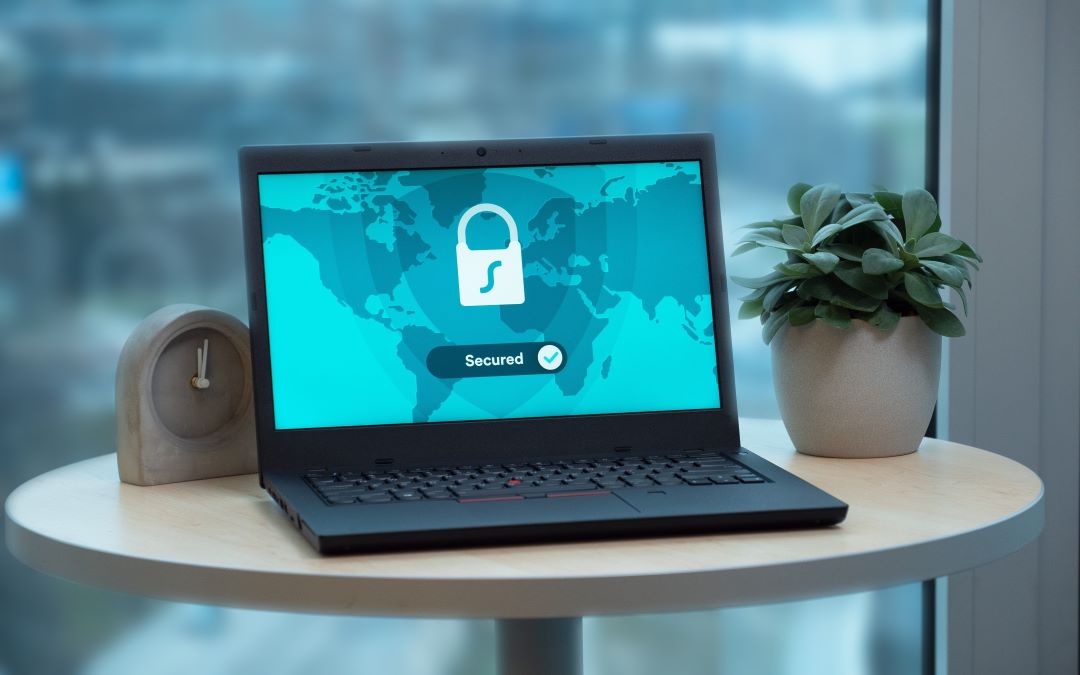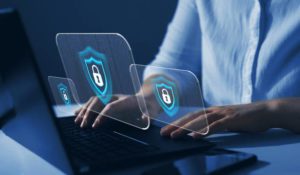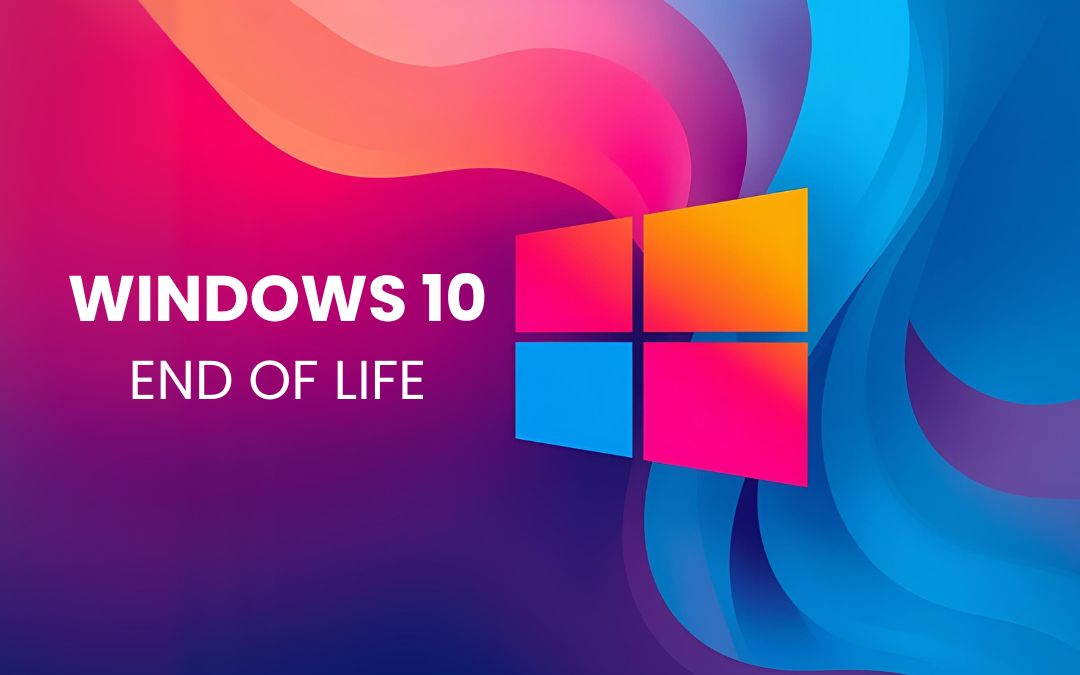

There are times in life when it pays to be safety first. Take cyber security for instance.
When it comes to safeguarding your business, finances, and personal information, it’s not wise to take unnecessary risks.
Cyber crime is growing more sophisticated every year, but thankfully security measures are also keeping pace and there are lots of great ways to protect yourself using the latest technology.
It’s not just about safety either, businesses and other organisations also need to comply with the latest security standards and legislation.
However, with technology and legislation seemingly changing all of the time, where do you start?
That’s where we come in. At Operum, we’re here to help guide you through
What is Cyber Security?
Simply put, cyber security is a means to protect devices and networks, along with the valuable information stored on them, from any and all potential risk.
The most obvious of these threats comes from cyber criminals and hackers but accidental data leaks and breaches can be just as damaging and costly, especially after the GDPR came into effect.
They can also happen very easily.
While sophisticated cyber criminals do exist, security breaches can also happen simply through an employee logging into an unsecure WiFi network on a work device.
For businesses large and small, it’s absolutely essential to ensure that financial data, personal information, and much more, remains safe and secure.
This is vital to maintain customer confidence as well as the trust of your employees and clients.
And as we mentioned above, it’s also about complying with the latest guidelines and legislation so it’s doubly important.
If you want to ensure business as usual then cyber security needs to be a key part of your operations and strategy.
Cyber security can include a wide range of protective measures and processes.
These include encryption, two-way authentication, antivirus software, firewalls, securing DNS (domain name servers), regular staff training, and more.
We’ll have more on these measures further below so keep reading and more on different types of cyber crime in a future newsletter.
Before we move on, there’s also one further piece of advice we can offer – one of the best ways to protect your business is to work with IT security experts.
Cyber Security Essentials
The following letters may be the acronym of an intelligence agency, but they’re also the three essential pillars of cyber security: CIA.
This stands for confidentiality, integrity, and availability. In short, that’s keeping data private, ensuring information can only be accessed by authorised users, and that systems are available whenever you need them.
The UK’s National Cyber Security Centre (NCSC) has also published 10 Steps to Cyber Security, which it defines as:
- Risk Management
- Engagement and Training
- Asset Management
- Architecture and Configuration
- Vulnerability Management
- Identity and Access Management
- Data Security
- Logging and Monitoring
- Incident Management
- Supply Chain Security
As you can see, there is a lot to consider, and there are also further guidelines based on the size of your business and industry too, but as we said above – you’re not alone in this.
We’re here to help and our experts can guide you every step of the way from safeguarding your business against cyber criminals to assisting with IT governance, compliance, and more. If you are interested in getting certified with Cyber Essentials and Cyber Essentials Plus read our blog- Securing Your Business: A Comprehensive Guide to Cyber Essentials & Plus.
It may seem like a minefield, but we know the way through and we’ll ensure you stay safe.
This is just one of the benefits of managed IT support. To find out more click here.
What is ISO27001 and Why Do You Need it?
ISO27001 is an international standard in information security.
It was jointly created by the International Organisation for Standardisation and the International Electrotechnical Committee.
It is considered a best practice blueprint for information security and is an increasingly useful way of demonstrating that your business or organisation meets the highest standard of security.
This is very important as more and more government and private sector contracts are being decided on the basis of whether a supplier has ISO27001.
However, it is not as simple as filling out some paperwork and applying to receive this certification.
There is a significant amount of work involved and it is best to work with the professionals.
This is a major project so be sure to choose a trustworthy and transparent third-party who will give you the best chance of getting certification for the most reasonable price.
For more on ISO27001 and how we can help click here.
How To Protect Yourself
Now that you understand the potential threats, the damage they can cause, and the importance of cyber security for your business, we’re sure your next question is how you can protect your information, network, and devices?
- Identifying Risks and Taking Action
In the NCSCs 10 Steps to Cyber Security, you’ll see a big focus on identifying and managing risks, including identifying risks, training staff, data security, reviewing access, and in particular, management. This is where Managed IT Services from an experienced and professional third-party can really make your life easier as these steps, and this process, is exactly what they will do for you.
- IT Audit Security Scan
Regular security scans carried out by experts can quickly identify any anomalies or issues, which can be quickly resolved. These scans include your servers, networks, endpoint computers, wireless networks, and more. This can help prevent problems before they happen. To book in an IT Audit Security Scan as a first step to safeguarding your business, click here.
- IT Governance
This includes setting up a password policy for your business, including who has access to what resources, procedures for onboarding and offboarding, safe hardware disposal, and more.
Hackers
Let’s talk now a bit about the main culprit why we need to step our game when it comes to Cyber Security and that is hackers!
The fact remains that a hacker only needs to succeed once, while your team must constantly remain vigilant to protect your organisation from cyber threats. They need to get it right all of the time, often quietly and behind the scenes. This asymmetry between hackers and IT security can feel insurmountable, but there are strategies to level the playing field. In this blog post, we’ll explore common attack vectors, ways to build a high-performing cybersecurity team, and best practices for securing your systems. Remember, if you need help, don’t hesitate to contact us for expert advice and guidance. As always, you’ll find our details at the bottom of the page. For now, keep reading to find out how you can safeguard yourself from hackers.
The Problem with Hackers
The main issue facing both individuals and businesses looking to protect themselves is that cyber attackers have the natural advantage. They can launch countless attacks, and as long as one is successful, they’ve achieved their goal. In contrast, your team must prevent every single one of these attempts to keep your organisation safe. This seemingly impossible task is made even more challenging by the constantly evolving landscape of cyber threats.
Hackers are improving and refining their methods all of the time while seeking out new vulnerabilities. This means that your team needs to be knowledgeable about the latest threats and stay up to date on emerging trends. Additionally, they must have a deep understanding of your organisation’s unique cybersecurity needs as well as the skills to address them effectively.
But there is even more to consider. IT teams need to deal with both your infrastructure and any users who can also be targets for very sophisticated attacks. As you can see, it’s a battle taking place on several fronts and protecting your organisation’s infrastructure is only half the fight if your users are still vulnerable. IT security needs to stay one step ahead. Unfortunately, every year, hackers become more professional and difficult to stop. The reasons for this are:
1. Hackers are often located in different geographical locations.
Local police have very little incentive to chase criminals who steal money from businesses or people in another country. Therefore, attacking someone who is on the other side of the world is not an issue or a barrier. Additionally, in some countries the same criminals can afford to pay bribes to the police to avoid repercussions. Overworked police have more urgent local issues where they’re needed to prevent criminals harming the immediate population. Prosecuting a criminal who is in a different country is very difficult and costly. As you can see, the incentives for criminals are huge especially if this is a developing country.
2. Users are not keeping up with the advancement of new threats.
Technology is very complex, and even though I’ve worked as an IT engineer and expert for more than 25 years, I still see limits to my knowledge. And I’m certainly not alone in this fact. It’s very important to keep learning and continuously update your knowledge, especially about the latest threats. Recently, I was listening to a podcast where a US-trained offensive hacker told the story of how he was employed as a contractor in the Middle East to train locals. After he completed the training and returned to the US, he was alerted that he might have been the victim of an attack from his former employer. It turned out that was actually the case. They managed to break into his computer and mobile phone, while also targeting his family and close friends as collateral damage. If an expert like this is vulnerable, then everyday users who are not keeping up to date with cyber threats are even more so.
It’s clear that hackers have a much easier job than the team that protects your company. If an attack fails to achieve its goal, they don’t lose anything and promptly can launch another attack. On the other hand, if the defenders fail even just once the damage can be devastating. From lost revenue and reputation to confidential information being published on the internet, stolen data, and much worse. Just one serious attack could be the end of your business, which is why it pays to get your cyber-security right the first time. Want to know more? Simply keep reading.
The Solution: Develop a Robust Defence Strategy
To overcome these significant challenges and ever-present dangers, it’s essential to develop a comprehensive defence strategy. This includes understanding common attack vectors, building a high-performing cybersecurity team, and employing best practices for securing your systems. This may sound expensive and beyond your technical know-how, but it doesn’t have to be, especially when you work with the right team [Click here to get in touch]. We’ll have more on that (and how to contact us at the end). For now, let’s dive deeper into these critical components.
Types of Attacks:
- Brute Force Attack: In this attack, the hacker systematically tries every possible combination of characters to crack a password. This can be time-consuming but effective if the target’s password is weak.
- Dictionary Attacks: Unlike brute force attacks, dictionary attacks use a list of likely passwords based on commonly used words or phrases. This method is faster and can be effective against weak passwords.
- Social Engineering Attacks: These attacks involve manipulating individuals to divulge sensitive information, such as login credentials, by posing as a trusted source.
- Credential Stuffing Attacks: In this type of attack, hackers use stolen or leaked credentials from other data breaches to gain unauthorised access to an organisation’s systems.
- Zero-Day Attack: A zero-day attack exploits previously unknown vulnerabilities in software or hardware. These attacks are particularly dangerous because they can bypass existing security measures.
- Man-in-the-Middle Attack: This is an attack where the attacker is between the user and the legitimate system, relaying credentials and traffic. Saving either credentials or authentication cookies. Another variant of this attack is AiTM (Adversary in The Middle).
Developing a High-Performing Team
- Team Leader and Entire Team Dynamics: Effective cybersecurity teams require strong leadership and clear communication among team members. The team leader should have a thorough understanding of the organisation’s cybersecurity needs and be able to delegate tasks efficiently. Still, it is important to understand that building a cybersecurity team is not an afterthought. If there is money left in the budget, we can do something to help, but clients also need to understand that it is an active role best developed over time. Ongoing and regular training is a must to stay up to date. The famous Abraham Lincoln’s quote fits perfectly here: “Give me six hours to chop down a tree and I will spend the first four sharpening the axe.” Cyber security, in essence, is preparation, more preparation, and ongoing training.
- Emotional Intelligence & Extra Time for Planning & Reflection: High-performing teams exhibit emotional intelligence, which helps them navigate stressful situations and maintain a positive work environment. Allocating extra time for planning and reflection allows the team to stay ahead of emerging threats and continually refine its defence strategy.
Keeping Systems Secure Against Attackers & Password Managers
- Use Complex Passwords & Avoid Common Passwords: Encourage employees to use complex, unique passwords that are difficult for attackers to guess. Avoid common passwords like “123456” or “password,” as these are easily cracked. Using unique and distinct sentence-like passwords is a great idea as well.
- Password Managers: Implementing password managers can help employees securely store and manage their login credentials, reducing the risk of credential stuffing attacks and other password-related threats.
- Antivirus Software & Malicious Software Detection: Regularly update antivirus software to protect against the latest malware threats. Additionally, employ intrusion detection systems (IDS) and intrusion prevention systems (IPS) to monitor network traffic for suspicious activity and block potential attacks.
- IP Address Tracking & Investigation of Attack Vector: Track and analyse IP addresses to identify potential threats and uncover the sources of attacks. This information can help your team identify patterns and better understand the tactics employed by hackers.
- Regular Security Audits & Vulnerability Assessments: Conducting regular security audits and vulnerability assessments can help your team identify weaknesses in your systems and prioritise necessary security improvements.
- Employee Training & Awareness: Educate your employees about the importance of cybersecurity and the risks associated with social engineering attacks. Provide regular training sessions to keep staff informed about the latest threats and best practices for protecting sensitive information.
- Multi-Factor Authentication (MFA): Implement MFA to add an additional layer of security to your login processes. MFA requires users to provide two or more forms of identification, making it more difficult for attackers to gain unauthorised access.
- Hardware Keys: Incorporate hardware keys as an added security measure to strengthen your organisation’s defence against cyber-attacks. Hardware keys, also known as security tokens, are physical devices that serve as an additional authentication factor when accessing sensitive systems or services. They come in various forms, such as USB devices, smart cards, or even small Bluetooth-enabled gadgets. Hardware keys work alongside other authentication methods, like passwords or biometrics, to create a more robust multi-factor authentication system.
- Regular Software Updates & Patch Management: Keep your software and systems up to date by applying the latest patches and updates. This helps to eliminate known vulnerabilities that hackers may exploit.
- Incident Response Plan: Develop a comprehensive incident response plan to ensure your team is prepared to react effectively to a cyber-attack. This plan should include clearly defined roles and responsibilities, communication protocols, and recovery procedures. One of the most important things to understand is, during a successful attack, our mental state will be challenged. We will not be calm and use our best judgement. Decisions will have to be made fast and under pressure. Should we power down the server? Kill the internet connection? What if the data is being encrypted? It is a very good idea to think through all these scenarios beforehand and try to ensure that you and your team are fully prepared before it happens (as much as we hope it never does). It’s vital to have a plan written down and fully accessible with clear and obvious steps. You can even go a step further and regularly request every member of your team explain in their own words what they need to do in each different crisis scenario. You may be surprised by how much difference there is between what you have assigned your team and what someone else understands they have to do in an emergency. This is another reason to run through scenarios in advance. As we said earlier, preparation, more preparation, and ongoing training.
- Network Segmentation & Access Controls: Segregate your network into smaller, more manageable segments to limit the potential damage caused by a successful cyber-attack. Implement strict access controls to ensure that only authorised personnel can access sensitive data and systems. In IT and cyber-security, the simpler the solution, the easier it is to manage. Each solution over time has the uncanny ability to gain complexity, so keeping the solution as simple as feasible is a good policy.
- Data Backups and Recovery: Backups are one of the most mundane tasks but regularly backing up critical data is an essential component of a robust cybersecurity strategy. Data backups ensure that your organisation can quickly recover from a cyber-attack, system failure, or other unexpected events that may result in data loss. Implementing a comprehensive backup and recovery plan involves several key steps:
– Identify Critical Data: Determine which data is most vital to your organisation’s operations and prioritise it for backup. This may include customer information, financial records, intellectual property, and any other data essential to your business processes.
– Choose Backup Methods: Select appropriate backup methods for your organisation, considering factors like the size of your data, the frequency of backups, and the desired recovery time. Options may include full, incremental, or differential backups, with storage on local devices, network-attached storage (NAS), or cloud-based solutions. Generally, it is a good idea to use a separate system such as cloud-based solutions from different providers as this on its own can create an additional layer of protection. If our system is accessed, destroying backups in the different systems can potentially be another obstacle for the attacker to deal with.
– Encrypt Backups: Protect your backups by encrypting them, ensuring that even if a backup is stolen or accessed by unauthorised individuals, the data remains secure and unreadable.
– Implement Offsite Storage: Store backups in multiple locations, including offsite storage, to safeguard against potential disasters such as fires, floods, or theft. This can be accomplished through physical offsite storage or cloud-based solutions.
– Test and Monitor: Regularly test your backups to verify their integrity and ensure that they can be successfully restored in the event of a data loss. Monitor your backup systems for any issues, such as failed backups or signs of tampering, and address them promptly.
– Update Backup and Recovery Procedures: As your organisation grows and evolves, update your backup and recovery procedures accordingly. This includes revisiting the critical data you need to protect, assessing the adequacy of your current backup methods, and adjusting your backup strategy as needed. This step is very important as changes happen over time and can be potentially lost in the cracks with communication. For example, one team adds a new resource and does not update the team that deals with backups about the new resources assuming that their colleagues will be able to see it on their own etc.
Next Steps
We know cyber security can sound a little daunting, but it doesn’t have to be – especially if you work with the right people. Our dynamic, professional business is made up of friendly and experienced IT experts, with more than six decades of combined knowledge and insight.
If you need a helping hand with your cyber security measures then we would love to help make your life easier. Click here to find out how to contact us today or jump to our website to find out more – click here.
It is as easy as 1, 2, 3:
1. Our team will have an initial call with you.
2. We will prepare the solution that will fit your company.
3. Once you accept our plan, we will start dealing with all of the above so you can concentrate on what you do best… 🙂
Did you know we are the most trusted Managed IT support in London 🤓All you need to do is just send me a message and we will do the rest. Click here to get in touch or simply give us a call at 0800 389 6798.
Sign up below to join the Operum newsletter



